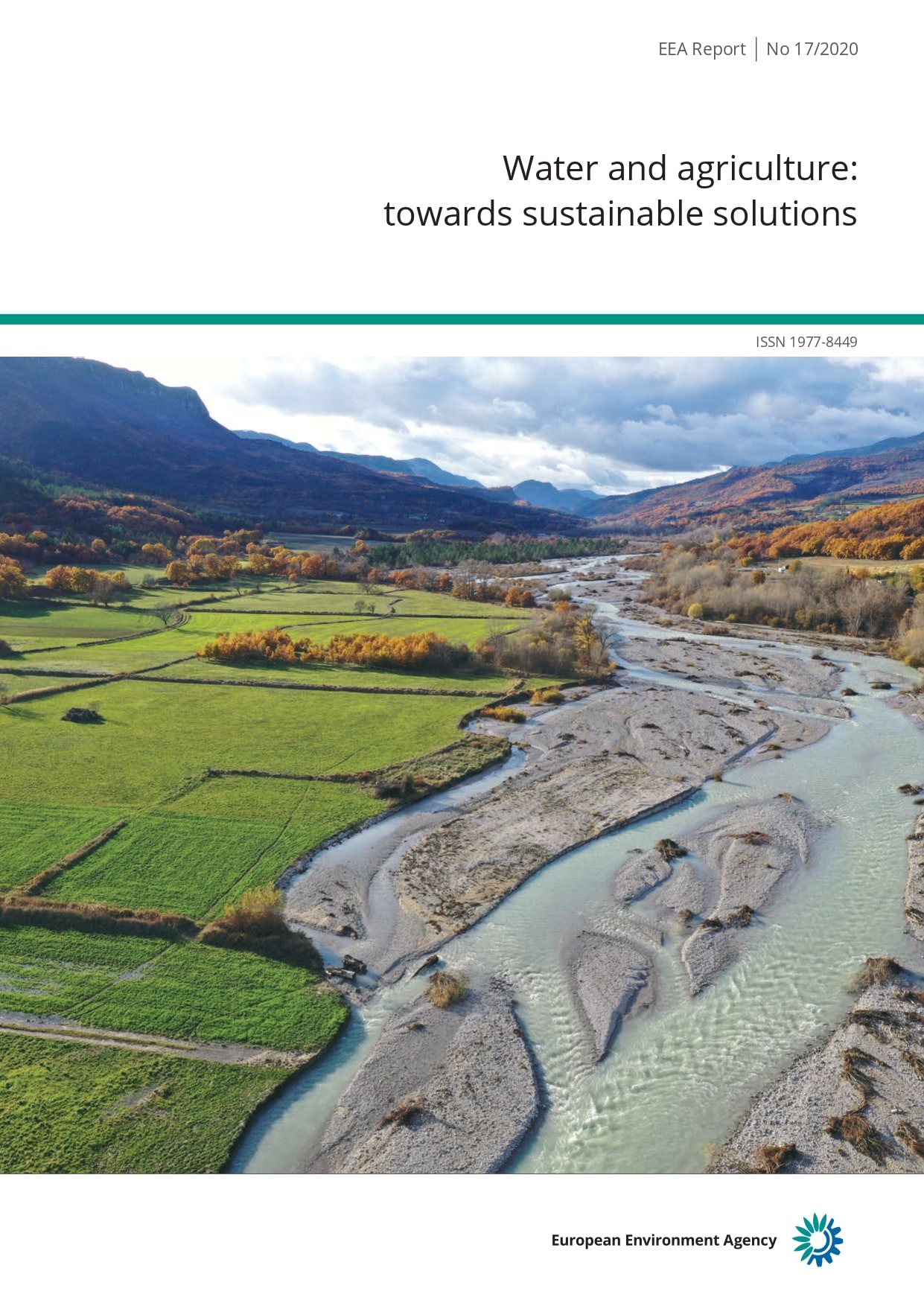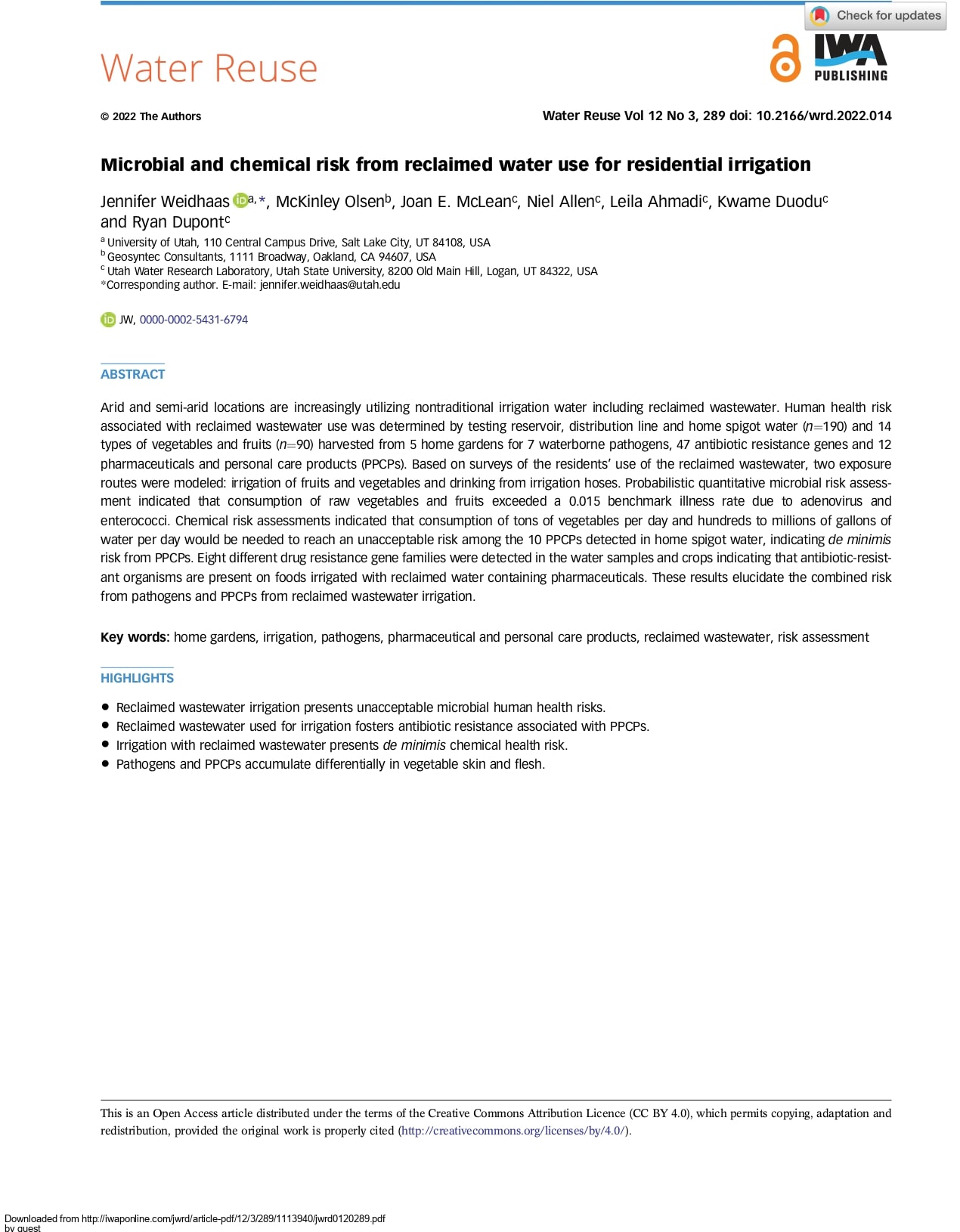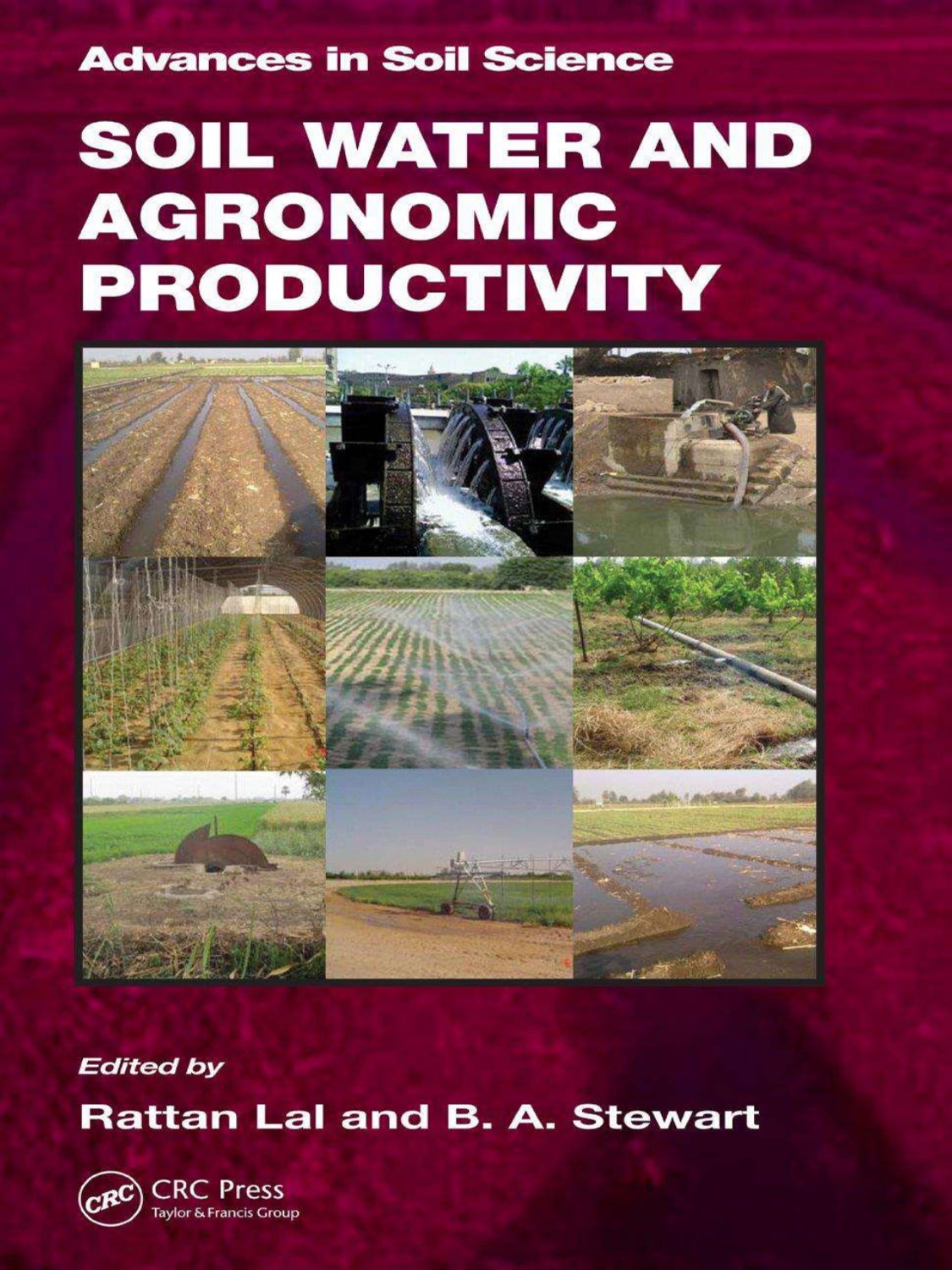Soil Conservation Service Curve Number (SCS-CN) Method Current Applications, Remaining Challenges, and Future Perspectives
Source: https://www.mdpi.com
Edited by: Konstantinos X. Soulis
Usually dispatched in 2 to 3 days
Usually dispatched in 2 to 3 days
Category:
Irrigation & Agriculture
Only logged in customers who have purchased this product may leave a review.
Related products
Optimizing Plant Water Use Efficiency for a Sustainable Environment
The rising shortage of water resources in crop-producing regions worldwide and the need for irrigation optimisation call for sustainable water savings. The allocation of irrigation water will be an ever-increasing source of pressure because of vast agricultural demands under changing climatic conditions. Consequently, irrigation has to be closely linked with water-use efficiency with the aim of boosting productivity and improving food quality, singularly in those regions where problems of water shortages or collection and delivery are widespread. The present Special Issue (SI) showcases 19 original contributions, addressing water-use efficiency in the context of sustainable irrigation management to meet water scarcity conditions. These papers cover a wide range of subjects including (i) interaction mineral nutrition and irrigation in horticultural crops, (ii) sustainable irrigation in woody fruit crops, (iii) medicinal plants, (iv) industrial crops, and (v) other topics devoted to remote sensing techniques and crop water requirements, genotypes for drought tolerance, and agricultural management.
Optimizing Plant Water Use Efficiency for a Sustainable Environment
The rising shortage of water resources in crop-producing regions worldwide and the need for irrigation optimisation call for sustainable water savings. The allocation of irrigation water will be an ever-increasing source of pressure because of vast agricultural demands under changing climatic conditions. Consequently, irrigation has to be closely linked with water-use efficiency with the aim of boosting productivity and improving food quality, singularly in those regions where problems of water shortages or collection and delivery are widespread. The present Special Issue (SI) showcases 19 original contributions, addressing water-use efficiency in the context of sustainable irrigation management to meet water scarcity conditions. These papers cover a wide range of subjects including (i) interaction mineral nutrition and irrigation in horticultural crops, (ii) sustainable irrigation in woody fruit crops, (iii) medicinal plants, (iv) industrial crops, and (v) other topics devoted to remote sensing techniques and crop water requirements, genotypes for drought tolerance, and agricultural management.
A Benefit-cost Analysis Of Treated Wastewater Reuse For Irrigation In Tubas
The West Bank, Palestine suffers from water scarcity due to the high population growth rate, the political situation that dictates the utilization and development of the water resources and the arid and semiarid climate conditions. Reuse of treated wastewater can be a source of water for the
irrigation of agricultural crops and thus this will lessen the stress on the water resources, increase the agricultural productivity and prevent the pollution of
the soil and groundwater. This work investigated the feasibility of reusing treated wastewater for irrigation in the Tubas area. Thereafter, a benefit-cost analysis was carried out to estimate the cost of the reuse of the treated wastewater in Tubas area. The study considered five options for wastewater treatment in Tubas area: construction of a treatment plant for the wastewater originating from the north of Tubas, south of Tubas, north of Tubas and Tayaser village, all of Tubas, and all of Tubas and Tayaser village, respectively. The study analyzed three systems for secondary wastewater treatment: activated sludge (AS), trickling filter (TF) and aerated lagoons (AL).
Rated 5.00 out of 5
A Benefit-cost Analysis Of Treated Wastewater Reuse For Irrigation In Tubas
The West Bank, Palestine suffers from water scarcity due to the high population growth rate, the political situation that dictates the utilization and development of the water resources and the arid and semiarid climate conditions. Reuse of treated wastewater can be a source of water for the
irrigation of agricultural crops and thus this will lessen the stress on the water resources, increase the agricultural productivity and prevent the pollution of
the soil and groundwater. This work investigated the feasibility of reusing treated wastewater for irrigation in the Tubas area. Thereafter, a benefit-cost analysis was carried out to estimate the cost of the reuse of the treated wastewater in Tubas area. The study considered five options for wastewater treatment in Tubas area: construction of a treatment plant for the wastewater originating from the north of Tubas, south of Tubas, north of Tubas and Tayaser village, all of Tubas, and all of Tubas and Tayaser village, respectively. The study analyzed three systems for secondary wastewater treatment: activated sludge (AS), trickling filter (TF) and aerated lagoons (AL).
Rated 5.00 out of 5
Sustainable Use of Soils and Water: The Role of Environmental Land Use Conflicts
This book on the sustainable use of soils and water addressed a variety of issues related to the utopian desire for environmental sustainability and the deviations from this scene observed in the real world. Competing interests for land are frequently a factor in land degradation, especially where the adopted land uses do not conform with the land capability (the natural use of soil). The concerns of researchers about these matters are presented in the articles comprising this Special Issue book. Various approaches were used to assess the (im)balance between economic profit and environmental conservation in various regions, in addition to potential routes to bring landscapes back to a sustainable status being disclosed.
Sustainable Use of Soils and Water: The Role of Environmental Land Use Conflicts
This book on the sustainable use of soils and water addressed a variety of issues related to the utopian desire for environmental sustainability and the deviations from this scene observed in the real world. Competing interests for land are frequently a factor in land degradation, especially where the adopted land uses do not conform with the land capability (the natural use of soil). The concerns of researchers about these matters are presented in the articles comprising this Special Issue book. Various approaches were used to assess the (im)balance between economic profit and environmental conservation in various regions, in addition to potential routes to bring landscapes back to a sustainable status being disclosed.
Water and Agriculture: Towards Sustainable Solutions
The main pressures from agriculture are linked to diffuse pollution from nutrients and chemicals, water abstraction and hydromorphological changes. Often several pressures act at the same time, potentially increasing the range of ecological impacts. According to information reported under the WFD, around one third of surface water bodies fail to achieve good status because of one or several of these pressures.
Water and Agriculture: Towards Sustainable Solutions
The main pressures from agriculture are linked to diffuse pollution from nutrients and chemicals, water abstraction and hydromorphological changes. Often several pressures act at the same time, potentially increasing the range of ecological impacts. According to information reported under the WFD, around one third of surface water bodies fail to achieve good status because of one or several of these pressures.
Watering Floodplain Wetlands in the Murray–Darling Basin to Benefit Native Fish A Discussion with Managers
This report describes the content and outcomes of a workshop entitled ‘Watering Floodplain Wetlands of the Murray–Darling Basin for Fish: A Discussion with Managers’ held on 5 March 2008 at Wonga Wetlands in Albury (NSW). The workshop was part of a four-year, National Water Commission funded project aimed at optimizing wetland environmental watering protocols to maximize benefits to native fish populations.
Watering Floodplain Wetlands in the Murray–Darling Basin to Benefit Native Fish A Discussion with Managers
This report describes the content and outcomes of a workshop entitled ‘Watering Floodplain Wetlands of the Murray–Darling Basin for Fish: A Discussion with Managers’ held on 5 March 2008 at Wonga Wetlands in Albury (NSW). The workshop was part of a four-year, National Water Commission funded project aimed at optimizing wetland environmental watering protocols to maximize benefits to native fish populations.
Soil Water and Agronomic Productivity
The need for an efficient use of soil water is.also enhanced by the lack of availability of freshwater
supply for supplemental irrigation. Global water use for agriculture,.as a percentage of the total water
use,was 81.4% in 1900, 72.3% in 1950, 68.2% in 1975, and 56.7% in 2000. Global water use for urban
purposes (km 3/year) was 20 in 1900, 60 in 1950, 150 in 1975, and 440 in 2000. Similarly, global water
use (km 3/year) for industrial purposes was 30 in 1900, 190 in 1950, 630 in 1975, and 1900 in 2000
Availability of water for irrigation is also constrained by the diversion to fossil fuel production
and eutrophication/pollution of water resources. One liter of bioethanol production requires 3500L
of fresh water. Thus, there is a strong and prime need for conserving, recycling, and improving soil-
water resources to meet the food demands of the growing world population.
supply for supplemental irrigation. Global water use for agriculture,.as a percentage of the total water
use,was 81.4% in 1900, 72.3% in 1950, 68.2% in 1975, and 56.7% in 2000. Global water use for urban
purposes (km 3/year) was 20 in 1900, 60 in 1950, 150 in 1975, and 440 in 2000. Similarly, global water
use (km 3/year) for industrial purposes was 30 in 1900, 190 in 1950, 630 in 1975, and 1900 in 2000
Availability of water for irrigation is also constrained by the diversion to fossil fuel production
and eutrophication/pollution of water resources. One liter of bioethanol production requires 3500L
of fresh water. Thus, there is a strong and prime need for conserving, recycling, and improving soil-
water resources to meet the food demands of the growing world population.
Soil Water and Agronomic Productivity
The need for an efficient use of soil water is.also enhanced by the lack of availability of freshwater
supply for supplemental irrigation. Global water use for agriculture,.as a percentage of the total water
use,was 81.4% in 1900, 72.3% in 1950, 68.2% in 1975, and 56.7% in 2000. Global water use for urban
purposes (km 3/year) was 20 in 1900, 60 in 1950, 150 in 1975, and 440 in 2000. Similarly, global water
use (km 3/year) for industrial purposes was 30 in 1900, 190 in 1950, 630 in 1975, and 1900 in 2000
Availability of water for irrigation is also constrained by the diversion to fossil fuel production
and eutrophication/pollution of water resources. One liter of bioethanol production requires 3500L
of fresh water. Thus, there is a strong and prime need for conserving, recycling, and improving soil-
water resources to meet the food demands of the growing world population.
supply for supplemental irrigation. Global water use for agriculture,.as a percentage of the total water
use,was 81.4% in 1900, 72.3% in 1950, 68.2% in 1975, and 56.7% in 2000. Global water use for urban
purposes (km 3/year) was 20 in 1900, 60 in 1950, 150 in 1975, and 440 in 2000. Similarly, global water
use (km 3/year) for industrial purposes was 30 in 1900, 190 in 1950, 630 in 1975, and 1900 in 2000
Availability of water for irrigation is also constrained by the diversion to fossil fuel production
and eutrophication/pollution of water resources. One liter of bioethanol production requires 3500L
of fresh water. Thus, there is a strong and prime need for conserving, recycling, and improving soil-
water resources to meet the food demands of the growing world population.
Water Productivity of Irrigated Agriculture in India Potential areas for improvement
Abstract
The objective of this paper is to estimate water productivity in irrigated agriculture in selected basins in India; and to identify the drivers of change in water productivity in these regions.
Water Productivity of Irrigated Agriculture in India Potential areas for improvement
Abstract
The objective of this paper is to estimate water productivity in irrigated agriculture in selected basins in India; and to identify the drivers of change in water productivity in these regions.















Reviews
There are no reviews yet.